Oviedo is the capital of the Asturias region of Spain and in this region cider isn’t simply the most popular alcoholic drink it is more of a religion, as well as being the base of some unusual traditions.
Whilst good cider, and the, almost ritualistic, way of serving it, is widely distributed in Asturias there is one street on Oviedo that takes it to the extreme. It is called Calle Gascona but is also known as the Bulevar de la Sidra, Cider Boulevard. Almost every business on that (pedestrianised) street is a bar and every one of the bars is a sideria, a cider bar, which may sell other drinks, but rarely expects to (perhaps with the exception of when you are having a meal). If you want to attract attention try ordering a mojito!
If you walk along this street on a fine evening, with people sat outside, you will be sure to witness the remarkable Asturian traditionl method of pouring the cider.
Cider comes in a bottle, not on draught, and you don’t simply take the top off the bottle and pour it into the glass; that would be far too easy and far less dramatic.
The Asturians believe that to unlock the flavour of the cider you need to hold the bottle in one hand, high above your head, and hold the glass (a special glass of around the size of a British pint glass) in the other hand about thigh height, at about a 45 degree angle. You then pour the cider from above your head so that a stream hits the inside rim of the glass until the glass is only about 1/6 full.
This releases the bubbles in the cider and it is at this point that the cider is said to taste at its best.
Now even the general Asturian drinker is not so skilled at pouring this way (known as the escanciar method) but the waiters in the cider bars are highly skilled and it seems to be tradition that they achieve the perfect pour without even looking at the glass. As you walk along Calle Gascona you will see many examples, with slight variations in technique, manly associated with whether a bucket is used to catch any cider which misses the glass. With the bucket they seem to hold the glass slightly further from their body. The old hands seem to take pride on not using one. They even have cider pouring competitions.
The waiters seem to be running from table to table, adding another portion to peoples glasses and this often involves customers waiting quite a while between drinks. It is common for a group to share a series of bottles rather than everyone having their own, with each glass being poured in turn but emptied even before the next person gets their drink.
The bubbles don’t last long so tradition has it that the glass has to be downed in one (except for a little drop in the bottom which is often poured onto the floor (some bars have sawdust on the floor to soak it up), a bucket, or in some establishments into a little channel that runs the length of the bar counter. Why so?
In the past, when there weren’t enough glasses to go around, people had to pass the glass on. When the cider is poured out, it is poured over the part of the rim where the last person to use it drank from, theoretically cleaning and sterilising the glass (but at up to only 6% alcohol in the cider the sterilisation is doubtful. There are plenty of glasses to go round these days but the tradition still prevails but not in the best restaurants (best to just drink it all, it seems a waste anyway).
To be honest it is probably going to have the same effect if you pour the cider from a couple of feet above the glass, but where’s the drama in that?
The start of this remarkable street is marked by a giant cider barrel near Parking el Vasco
Know Before You Go
If driving, Parking el Vasco is very convenient. However, if you intend to try the cider it is best to walk, it is not a massive city and you can reach the city centre in 15 minutes from the outskirts of town.
The Atlas Obscura Podcast is Back!



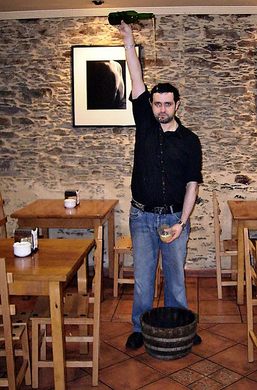
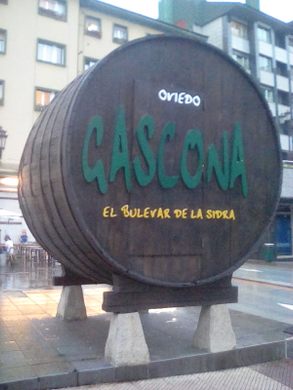
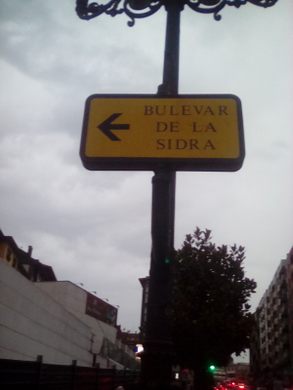
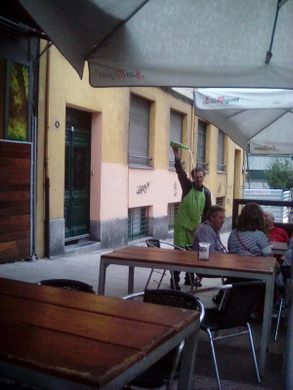
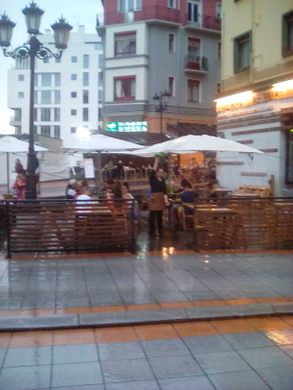
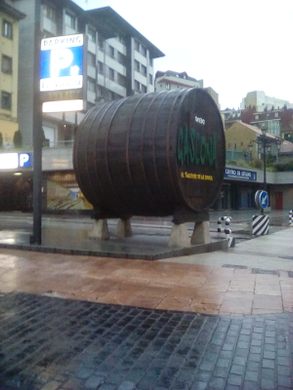
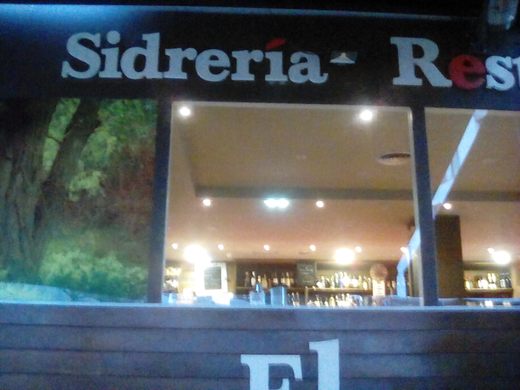




Follow us on Twitter to get the latest on the world's hidden wonders.
Like us on Facebook to get the latest on the world's hidden wonders.
Follow us on Twitter Like us on Facebook